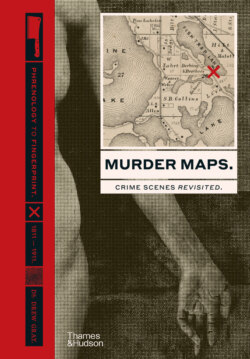Читать книгу Murder Maps - Drew Gray - Страница 10
На сайте Литреса книга снята с продажи.
Оглавление9
founded in 1829, New York’s in 1845, and, although the Paris ‘police’ had existed since the French Revolution, the police force there did not create a ‘detective’ branch until the 1830s. France undoubtedly led the way in detection techniques, establishing the first private detective agency at the beginning of the century, led by Eugène-François Vidocq (1775–1857), a former convict and police informer. Vidocq was appointed head of the Bureau de Sûreté in Paris and given the brief to detect crime and catch criminals. In the early years of detection, the idea that it ‘took a thief to catch a thief’ was dominant, and Vidocq was supported by a squad of ex-convicts and mouchards (police informants). This approach persisted until the 1870s when the importance of scientific detection gradually began to be appreciated. London’s Detective Department was created
in 1842, following some high-profile failures to solve serious crimes and fears over the growing number of attempts to kill Queen Victoria. The Criminal Investigation Department (CID) – the nerve centre of all detection in modern Britain – was not instituted until 1878 (and only then in the wake of a scandal that had implicated several members of the Detective Department in a betting scam). The city of Boston formed the first US detective agency in 1846, with other US cities following its lead.
The credit for the development of modern forensics must be given to a number of men working in the last quarter of the 19th century and the first decades of the 20th, but one man, Alphonse Bertillon (1853–1914), was the undisputed father of the science. As policing developed, it was quickly recognized that identity was the key to solving crime. The problem was that record keeping was patchy at best and so criminals could evade capture simply by changing their name, moving about the country and altering their appearance. Working in the Prefecture of the Paris Police, Bertillon studied the physical characteristics of people, working on the principle that you could narrow down the number of possible suspects by using data about them. He carefully measured the size of heads, distance between eyes, lengths of fingers and so on.
D.
C.
B.
A.
Below. these four drawings of the head are taken from a phrenological chart of 1836. they show the location of the twenty-seven individual organs of the brain that phrenologists believed determined
personality.
The British Government introduces the Indian ImpPolice as part of colonial rule.
erial W. V. Adams paadjustable ratchet design
tents the first for handcuffs.
The United States Secret Service is established to investigate counterfeiters.
The Howland forgery trial uses an analysis of signatures to identify a fake.
The National Criminal Record is set up in England.
Jean-Hippolyte Michon publishes his findings on handwriting analysis. Alfred Sw
aine Taylor develops processes for chemical, microscopic
Evidence from Dr William Kilburn convicts the pois
and optical investigation of bloodstains.Mary Ann Cotton, Britain’s fir
oner st female serial killer.
18611862186518681869187118731873
front elevation.rear elevation.
side elevation [right].
side elevation [left].
SENSATIONALIZED MURDER & THE RISE OF THE DETECTIVE.
